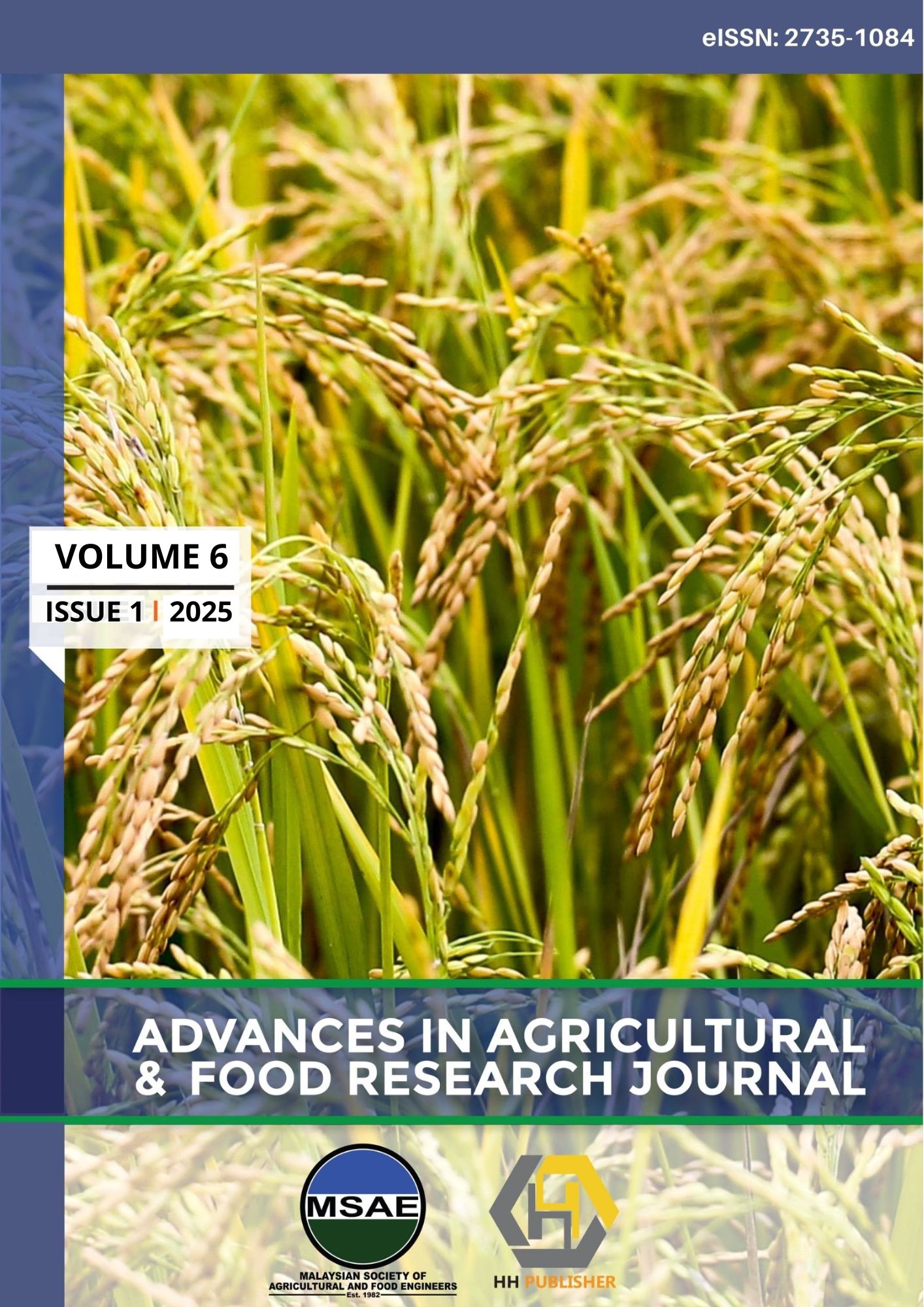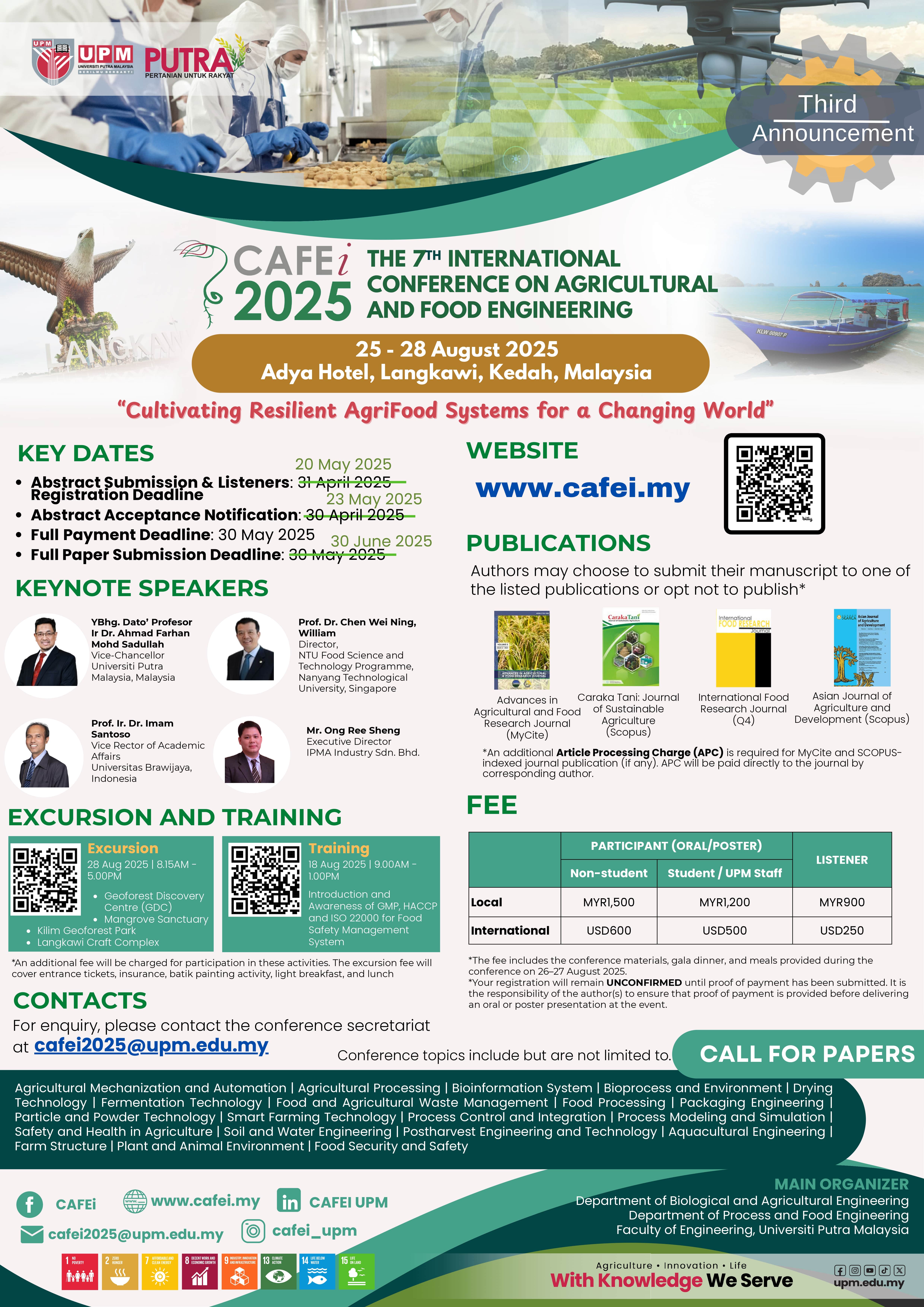Efficient Sanitation Strategies: Optimizing Cleaning in Place Parameters for Milk Fouling Deposit Mitigation
DOI:
https://doi.org/10.36877/aafrj.a0000546Abstract
Cleaning-in-place (CIP) operations necessitate optimization to maximize the efficiency of cleaning detergents while minimizing cleaning time. Therefore, this research endeavours to enhance CIP methodologies for effectively addressing milk fouling deposits in dairy industry settings. Through strategic manipulation of cleaning parameters, including sanitation temperatures, detergent-to-water ratios, and fluid velocities, the study aims to optimize the removal of milk fouling deposits during the detergent cycle phase of the CIP process. To achieve this, a physical model mimicking milk fouling deposits was developed using raw milk to replicate real-world industrial conditions. Subsequent controlled laboratory experiments, guided by Response Surface Methodology (RSM), were conducted to evaluate the impact of varying sanitation temperatures (30°C, 50°C, or 70°C), cleaning detergent-to-water ratios (0:1, 1:100, or 1:50), and fluid velocities (0.6, 0.9, or 1.5 m/s) on the efficacy of milk fouling deposit removal. The results reveal that optimal conditions, characterized by a temperature of 60°C, a detergent ratio of 1:90, and a fluid velocity of 1.5 m/s, significantly reduce the detergent cycle time to 12 minutes, ensuring complete elimination of milk fouling deposits from stainless-steel surfaces. These findings suggest potential cost efficiencies and promise improved operational effectiveness in dairy industry sanitation practices. Moreover, the study underscores the critical role of temperature and fluid velocity in enhancing cleaning efficacy, offering valuable insights for enhancing CIP processes within dairy facilities.
Downloads
Published
How to Cite
Issue
Section
License
Copyright (c) 2025 Nur Aziemah Adilah Asming, Nurul Izzah Khalid, Norashikin Ab Aziz, Nurfatimah Mohd Thani, Bernard Maringgal

This work is licensed under a Creative Commons Attribution-NonCommercial 4.0 International License.
Author(s) shall retain the copyright of their work and grant the Journal/Publisher right for the first publication with the work simultaneously licensed under:
Creative Commons Attribution-NonCommercial 4.0 International (CC BY-NC 4.0). This license allows for the copying, distribution and transmission of the work, provided the correct attribution of the original creator is stated. Adaptation and remixing are also permitted.

This broad license intends to facilitate free access to, as well as the unrestricted reuse of, original works of all types for non-commercial purposes.
The author(s) permits HH Publisher to publish this article that has not been submitted elsewhere.

.png)

.jpg)




